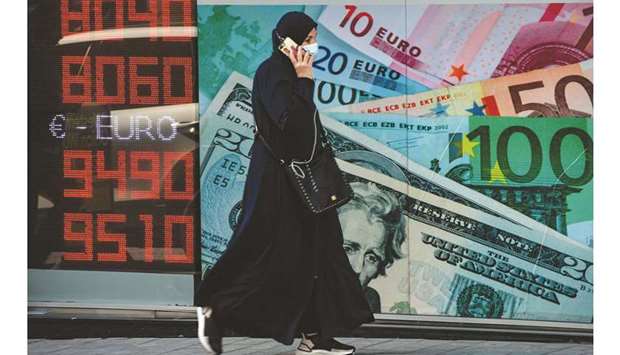Turkey’s central bank raised its 2020 inflation forecast more than 3 percentage points to 12.1% on Wednesday, saying higher import costs due to a record-weak lira were the main factor driving its upward revision.
Governor Murat Uysal defended the bank’s decision to leave its policy rate steady at 10.25% last week and to raise its late liquidity window rate.
It cited global uncertainty caused by the Covid-19 pandemic as a reason to keep the main rate on hold.
He also said it provided flexibility and was not a “lasting deviation” from the bank’s monetary policy structure.
As the lira hit a record low of 8.3 to the dollar, down 28% this year, he said the bank had no target value for the currency.
“We see it converging with macro-fundamentals in the medium term,” he said in a briefing on the bank’s quarterly inflation report.
Higher costs for imports, as well as rising food prices and credit growth, meant that an anticipated fall in inflation in the second half of the year had not materialised, he said.
“Despite our evaluation...inflation was higher than foreseen with credit growth,” Uysal said. “The outlook for the remainder of the year points to a high trend.”
Turkey’s economy had seen a V-shaped recovery from the slowdown caused by the pandemic, Uysal said, strengthening the prospects for positive economic growth in the full year after a first half slump caused by the coronavirus pandemic.
That optimism contrasts with expectations that Turkey’s economy will shrink 3.4% this year, according to a Reuters poll last week, much bleaker than government forecasts.
Turkey has been seeking to create or expand currency swap agreements with other central banks.
“There are some concrete developments in our swap talks, I can say we reached the final stages in some of them. We had determined countries with which we have high trade, there are concrete developments in a couple,” Uysal said. Measures such as swap deals and steps including the late liquidity window hike are unlikely to be enough to steady the lira, said TS Lombard’s Jon Harrison.
“In the past, the collapse of the lira has been met with aggressive rate hikes of the main policy rate, which have eventually restored stability,” he said.
The lira has been pressured by concerns about both inflation and the slide in the country’s foreign reserves, and its losses accelerated after the central bank bucked expectations last week by leaving its policy rate unchanged.

A woman walks past an information screen displaying rates in front of an exchange office in Istanbul on October 26. Turkey’s central bank raised its 2020 inflation forecast more than 3 percentage points to 12.1% yesterday, saying higher import costs due to a record-weak lira were the main factor driving its upward revision.
